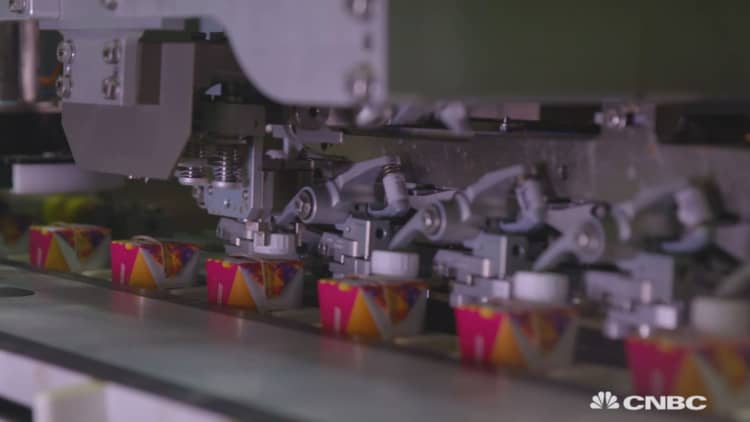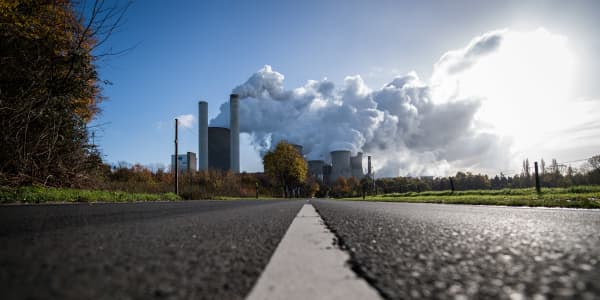
Tetra Pak has been in the business of packaging for more than 60 years, with its name a nod to the tetrahedron-shaped package that founder Ruben Rausing developed all those years ago.
The company has gone on to become a global powerhouse, using its processing and packaging technology on everything from ice-cream and fruit juice to pet food and olive oil.
The scale of the company’s operations is big. “We have around 5,000 customers, or a bit more than 5,000 customers, in 170 countries around the world,” Johann Nilsson, vice president of Tetra Pak Services, told CNBC’s Juliet Mann. These customers, Nilsson added, include some of the world’s most iconic food and drink businesses such as Nestle, Coca-Cola and PepsiCo.
Nilsson explained that Tetra Pak offered its customers a large portfolio of services. One such service is the predictive maintenance of systems. “You have sensors in equipment, it can be vibration sensors, temperature sensors, torque sensors, then you use that information,” he said.
Around 600 signals from a typical production line are collected via the cloud and sent to a data center, where algorithms are used to undertake analysis and calculate the remaining lifetime of equipment.
"You see how vibration increases, and then you know that when vibration, in combination with a certain temperature, reaches a certain limit, you know that there is just a short lifetime left," Nilsson said. "That way you can predict when a failure will happen with a high degree of certainty."
“This algorithm improves all the time, so it gets more precise,” Nilsson added. “You tell the customer, ‘In four weeks, you’re likely to have this failure, can we please come in two weeks and make sure that we change this part so it will not break.’”
With customers dotted all over the world, Tetra Pak is turning to a number of technological innovations to link its own experts with clients based elsewhere. Mixed reality is one of the areas that the business is turning to, using the HoloLens — a wearable, holographic computer — developed by Microsoft.
Nilsson said that Tetra Pak could use the HoloLens technology to connect one of its experts in a technical center to anywhere in the world via Skype or a similar application. “That makes the expert… virtually present on the factory floor within minutes,” he added.
How then, does the business measure the success of the technology it is using? “Less failures… less consumer complaints on a product, for example, can be an outcome,” Nilsson said.
Financial savings and improvements in efficiency were other benefits, he added. “The payback for our customers is typically months, and not years, on these types of investments because the technology you add is not very costly and the savings can be huge.”




